Fire and Smoke Alarms New Regulations in Scotland
AFA Fire & Security supply and install the highest performance smoke, heat, fire and carbon monoxide (CO) alarms and accessories to support all installations to specifiers needs.
Changes to Scottish fire safety regulations
New regulations are being introduced to ensure that every home in Scotland has an effective system in place for detecting and warning of smoke, fire and carbon monoxide.
This means every property must have interconnected smoke and heat alarms fitted throughout. In addition, a carbon monoxide alarm is also required in the relevant room in every home.
When do I need to be ready?
All homes in Scotland must meet the new regulations by 1st February 2022. If you’re not up to standard, your local authority could use its statutory powers to make you carry out any work required.
Where do I need alarms?
Under the new regulations, at least one smoke or heat alarm should be fitted in your:
- Living room
- Hallway
- Landing
- Kitchen
Loft conversion
Any rooms you pass through to reach the hallway from the kitchen or living room must also have an alarm fitted, unless the living room or kitchen has its own escape route. CO alarms should be fitted anywhere there is a fuel-burning appliance or a flue.
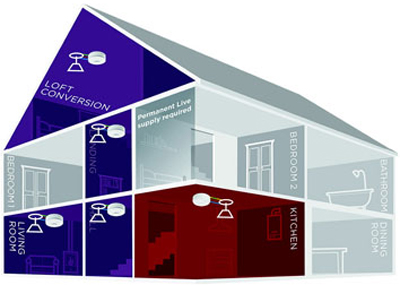
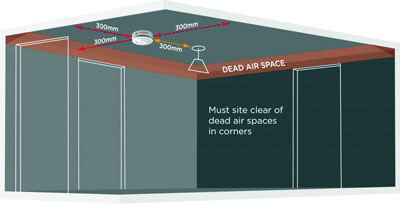
What properties are affected?
The new regulations apply to ALL homes, homeowners and landlords in Scotland and include domestic dwellings, social housing and private rentals.
What type of alarms do I need?
You should always ensure that your smoke and heat alarms are one of the following:
- Mains-powered with battery back-up, interlinked with wiring or wirelessly.
- Tamper-proof, sealed, long-life lithium battery, interlinked or wireless.
You can use a mix of both types, as long as they are all interlinked, so if one device detects a fire, all the alarms will trigger.
Read more
When choosing a CO detector, always check that it complies with BS EN 50291, and that it’s powered by a long-life battery. Also remember to check that it has a warning device that will alert you when it’s about to expire.
A mains-powered detector can also be used, providing it complies with BS EN 50291 (Type A).
Whatever you choose, your CO detector should be regularly maintained and tested.
What about my existing system?
If you’re adding new alarms to an existing fire detection system, you’ll need to ensure that all devices are interlinked, so every alarm sounds when one device is activated.
Where should I install smoke and heat alarms?
- Regularly used rooms: A smoke alarm MUST be fitted in the most frequently used room, e.g. the living room or lounge.
- Access walkways: A smoke alarm MUST also be installed in every circulation space on each storey of the home, e.g. the hallway or landing.
- Cooking areas: You MUST install a heat alarm in every kitchen.
- Sleeping areas: We recommend that there should be an alarm within 3m of every bedroom door, so it can be heard clearly by whoever’s inside.
- Rooms to avoid: Alarms should NOT be fitted in bathrooms or outside bathroom doors, as they can be affected by steam and moisture.
- Safe alarm positioning: Ensure alarms are positioned 300mm away from walls, light fittings or other obstructions.
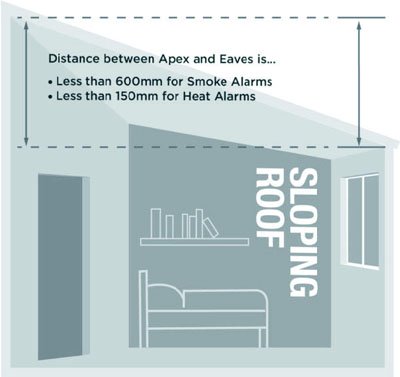
Read more
All smoke and heat alarms should be ceiling mounted, always connected and interconnected, i.e. linked. That way, if one alarm detects a fire, all alarms will trigger.
- Safe stairways: On stairways, we put the alarm at the top and bottom of the stairs – not on the sloped ceiling directly above it.
- Sloped ceilings: On peaked and sloped ceilings, smoke alarms will be fitted 600mm vertically down from the apex and heat alarms positioned 150mm vertically down from the apex.
- Ceiling beams: If your room has a beam, it can affect where the alarm must be fitted.
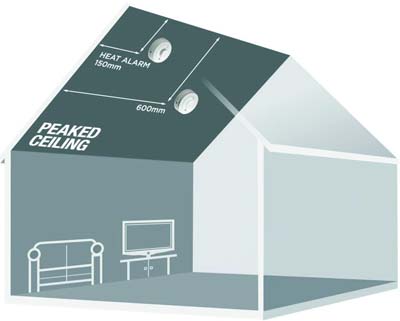
Carbon Monoxide (CO) Alarms
What is carbon monoxide?
Carbon monoxide (CO) is a toxic gas that has no colour, taste or smell. Exposure to low levels can cause headaches and nausea. High levels can cause death within minutes.
CO can be produced by any fuel-burning appliance such as a boiler, gas fire, gas cooker or wood-burning stove. Because it’s impossible for humans to tell if CO is present, the only way to protect against it is to install a suitable CO detector. The new regulations apply to such alarms.
Where do I need a CO alarm?
Read more
CO detectors should be fitted in all rooms where there is a fixed fuel-burning appliance or a flue. Depending on where you’re installing it, there are different requirements.
Rooms with an appliance:
- Fit alarms on the ceiling, 1m-3m from potential CO sources, and at least 300mm from any obstructions.
- In a confined space, e.g. a boiler room, fit the alarm on the ceiling just outside.
Rooms without an appliance:
- Alarms should always be fitted at breathing height.
- If installed in a bedroom, this could be the height of the bedhead.
The Repairing Standard
The ‘Repairing Standard’ applies solely to private landlords in Scotland. This refers to the minimum requirement that must be met by a rented property at the start of any tenancy, and which MUST continue throughout the subsequent occupancy.
Read more
What is the Tolerable Standard?
When reading about the new regulations, you may have heard that all homes in Scotland are required to meet the ‘Tolerable Standard’. This is the minimum requirement that must be met by all properties when it comes to fitting ‘satisfactory equipment’, i.e. the smoke, heat and carbon monoxide alarms highlighted on this website.
Read more
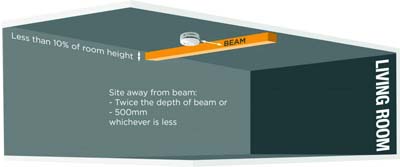
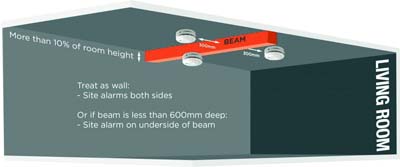
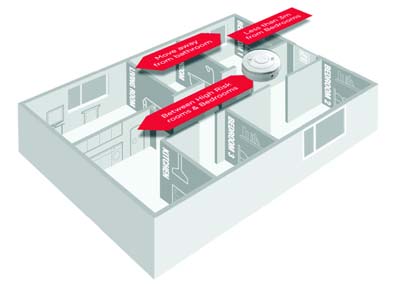
AFA Fire & Security is working in partnership with Aico to provide information on the new regulations. We are both happy to discuss any questions you may have about preparing your property and offer a full survey, quote, installation and maintenance service for all your needs.
Contact us today
To find out more information about Fire and Smoke Alarms and the New Regulations in Scotland please contact us today.
